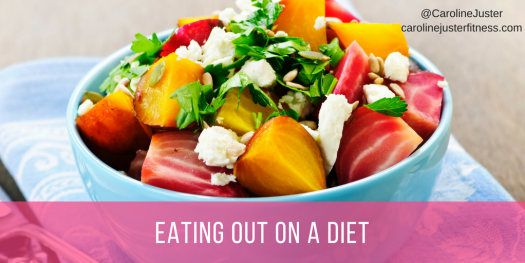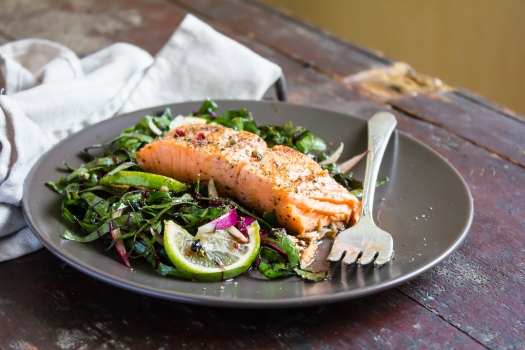July marked the one-year anniversary of one of the best decisions I ever made for my physical and mental health. After a lot of research and rumination, I signed up for online training with Bryan Krahn.
As many readers know, I lost over 70 pounds on my own in 2011 and 2012. I had already experienced tremendous success in changing my body, building new habits, and making lasting lifestyle changes. However, I never quite took the process as far as I intended. At my lowest weight I still hovered about 10 pounds above my goal. I was no longer obese or even overweight, but I still felt like I was carrying around more body fat than I wanted. I worked my ass off in the gym and I wanted to look a little more like I lifted. Many factors had conspired to prevent me from building the body I wanted. I decided it was time to fully commit and enlist the help of another coach.
Beyond simply wanting to get leaner, I knew I needed major help with my eating habits. A lifetime of overeating combined with my recent dive into the world of diets and health food had created a perfect storm of disordered eating from which I could not seem to break free. I alternated between periods of healthy, balanced eating and periods where I felt trapped by cycles of bingeing and restricting. I was tired of suffering through this alone and believed a coach could help me learn more about myself and what was causing these cycles.
Bryan appealed to me for two reasons. First, I knew I wanted to follow a plan geared more toward aesthetics (more on this below), and Bryan is a seasoned expert in that type of training. Second, I appreciated his holistic approach to getting lean that places a high value on managing stress, emotions, and other lifestyle factors. My original intent was to stay with Bryan for 3 months and then move on. However, I’ve had such a rewarding experience that I am still a loyal client more than 12 months later.
This article shares some of the most impactful lessons I’ve learned over the last year. Included are insights on building the body you want, creating lasting habits, and the value of coaching.

A year’s worth of progress
If you are honest about what you want out of training, you will have more fun and get better results.
For years I trained as a competitive powerlifter. I truly loved the sport, but I was getting to a point where I was frustrated with my progress. My lifts were no longer progressing as quickly as they were in my first years of training. This is a normal part of getting stronger, but I was beating myself up if I missed a lift and started dreading my workouts. I was letting my self-worth as a lifter get tied up in my total.
More importantly, I began to realize that what I really wanted was to look better. I wanted to be leaner, with bigger arms and shoulders and more definition across my body. I never spoke this goal aloud because I always felt like it was “too vain” and that training for strength or performance was a more accepted use of my time as a fitness professional and confident woman.
One thing that drew me to Bryan was his insistence that fit pros can and should try to get in good shape. There is absolutely nothing wrong with chasing this goal. Although I will always love powerlifting, I decided to shift gears and fully commit to an extended period of training for aesthetics.
Bryan’s programs initially kicked my ass. I was completely unaccustomed to higher volume training and performing such a wide variety of exercises. After a few months, however, I started to notice all kinds of positive changes in my body. This encouraged me to keep going and excited me for workouts workouts in a way that I had lost. I was motivated to work harder because I felt like I was spending my time in a way that resonated more with my desires.
Figure out what you want out of training and don’t let anyone else dictate what goal you should be pursuing. By being honest with myself about what I really wanted, I found a training style that was more fun and got me closer to my true goals.
If you want bigger arms or shoulders, you need to train them a lot. Like, A LOT.
Confession: I’ve always wanted more muscular arms. Even after losing a lot of weight, getting fairly strong, and generally feeling very confident in my skin, I was never truly happy with how my arms looked. Additionally, I’ve always admired and wanted a pair of big, round shoulders. No matter what I did, however, it seemed that my shoulders were never going to grow. I now realize that I wasn’t doing nearly enough volume for these muscles if I was serious about building some size.
During the past year, I’ve followed many training programs. Almost all of them had me doing tons of volume for the arms and shoulders. I typically trained shoulders 3-4 times per week and arms 2-3 times per week.* This specifically refers to direct isolation work for these muscles and does not include extra exposure from compound chest and back movements. Bryan also had me do a lot of giant cluster sets that included 3-5 exercises for the same body part with no rest in between. I didn’t worry as much about adding lots of weight. Instead, I focused on using good form so I could really feel the target muscle contracting and stretching.
(*Note – most of my shoulder work came from lighter shoulder raise variations. It’s not a good idea for most people to overhead press multiple times in one week.)
After a year Bryan’s workouts, I love the way my arms and shoulders look. They are still very much a work in progress, but I’ve seen noticeable muscle gain. This summer I’ve been rocking sleeveless shirts with every chance I get. But this didn’t happen by accident.
If you want bigger, leaner, or more defined arms and shoulders, you likely need to put in way more time. Don’t be fooled by people who say your arms get all the training they need from compound big lifts. Train your arms and shoulders often and with a variety of exercises for best results.

Arm gains
Following a program for a longer time leads to better results.
One of my favorite things about training with Bryan has been to spend some time digging deep into a training program. Too many people are caught up in the idea that they need to change things up all the time to see progress. In my experience, the latter weeks of a training program was where I started to really see and feel the magic.
Here is what a typical first phase of a training program looked like. The first few weeks were spent adapting to the new workouts, revisiting or learning any exercises that I hadn’t done in the last phase, and establishing a foundation for weights and reps. These weeks often left me feeling pretty sore. The program then built in volume or intensity through 3-5 weeks, after which I usually took a deload week where we cut the volume in half.
The second phase of the program brought back the same basic workouts with a few tweaks to minor exercises and the addition of some intensity techniques. It was in this second phase that I felt I could really push myself, set weight or volume PRs, increase the density of the workout by resting less, and generally get into a deep flow during the workouts. Notice that this didn’t really happen until the second phase. Although I was always trying to improve, I felt the biggest gains the longer I stayed with the program.
If I was in a hurry to get a totally new plan all the time, I would not have gotten as strong or built as much muscle. The takeaway here is to be patient with your training. Don’t be in a hurry to try the latest craze or new exercise all the time. You can see great progress for a long time by pushing yourself on a simple, well-constructed program.
 Me now vs me at my leanest
Me now vs me at my leanest
The diet is the easy part.
When I first started with Bryan, I was super pumped about my goals. I had reached the “fed up” point that I think is extremely valuable in driving motivation for change. I knew that in the next 3 months, I would do whatever it took to achieve my goal of getting lean. Diet, sacrifice, and hard work did not intimidate me as I had gone through similar processes before I knew what was coming.
As expected, the first 3 months of coaching went really well. I was able to fully commit to the new training style, adjust to the increased volume of training, and religiously stick to my calorie and macro guidelines. This led me to impressive results. I dropped over 15 pounds and looked noticeably leaner. I felt great about my accomplishments and loved the way my body was changing.
However, after the diet ended and we started to reintroduce a bit more freedom on the weekends, I fell hard back into old destructive eating habits. I had been so spot-on with my diet that when I finally relaxed the reins, I wasn’t able to maintain control. For a number of months, almost every weekend ended in a binge. Once the genie was out of the bottle, it was extremely difficult for me to get it back in again.
I didn’t realize it at first, but this period is where the real coaching work really began. I needed to confront a lifetime of bad choices and compulsive behavior that my 3 month diet simply masked. When I was losing weight and running a tight ship, I wasn’t really doing the deep work to address my personal demons and build habits to help me when I was at my most vulnerable. These issues came to the surface once I allowed myself more freedom to eat “normally”. Over time, I worked closely with Bryan to identify my triggers and put systems in place to help me deal with the before, during, and after parts of a binge. I also worked to distance myself emotionally from my eating habits. Before, I would freak out and feel tons of self-loathing when I “messed up”. Now, I practice compassion and kindness towards myself. If I fall back into old habits, I practice standing up again in my power without judgement.
I won’t sugarcoat this process and say it was easy, enjoyable, or even that it’s completed. I will probably always struggle on some level with my disordered eating. However, working with a coach who had been there and helped others in similar situations has helped me improve my mindset tremendously.
If you are working to change your body, remember that you can’t always be on a diet. You need to spend some time learning about yourself and building habits that will sustain you when you are out in the world living a normal life. If you don’t do this work, you will always be riding the roller coaster of weight loss and regain and the emotional scars that go along with it.

This is what a year’s worth of almost daily weigh-ins looks like. Notice the initial diet and then the many ups and downs related to binging.
Consistency is key.
One of the most valuable life lessons I have learned this year is the incredible power of consistency. I saw the best results when I got into a consistent rhythm of executing a few simple things every day. It’s one thing to have a few good days; it’s another thing to string together many weeks or months of good days. This is where the magic really happens.
Lots of people (myself included) shoot themselves in the foot by “being good” all week long and then feeling like they earned the right to relax and eat crappy food all weekend. It’s incredibly easy to wipe out a large deficit from the week with a couple meals out at a restaurant and an evening spent drinking.
Building habits was a huge help in maximizing my time and minimizing decision making. I got used to eating my meals at the same time every day and I had some version of the same breakfast and lunch most days. This made it much easier to shop and meal prep. I scheduled my training sessions on the same days every week so I always knew what to expect and how my body would feel before and after. As these habits solidified, I felt like I had to exert way less effort to get the same results. If I could put my head down and just do the work, I didn’t have to think as much about things like shopping, cooking, hunger, and how I felt going into the training sessions. I just did them because it’s what I always did.
If you’re struggling to make progress, first look for the good habits you already have that are moving you forward. Then look for ways to incorporate those habits into areas where you struggle. Try not to see your week vs weekend in black and white terms. If you can make everyday look a little more like the day before, you will start moving in the right direction.
Everyone needs a coach.
Even though I work in the fitness industry, I wasn’t getting the results that I wanted with my own training. After a long day of writing programs for clients, I lacked the desire to write programs for myself. My personal programs were biased and tended to include things I enjoyed and was good at but that weren’t the best tools to get me towards my goals. Additionally, I knew that I didn’t have the most relevant experience for my particular goals.
In the past, I had success following programs I found or purchased on the internet from other fitness pros. However, these programs only take you so far. They don’t provide the level of individual tweaking, support, and accountability that can make the difference between sticking with something and falling off because you got bored or didn’t feel good. I knew that I needed to seek out someone more experienced to take over my own training.
Working with Bryan also showed me that I was really not pushing myself to my full capacity. I would go so far as to say I was being lazy before. I would only do a couple workouts per week, skip cardio, and let myself off the hook with challenging sets. Although I always trained regularly, I also had a host of excuses for why I couldn’t or shouldn’t do more. It’s no wonder that my strength gains had stalled out and I was unhappy with my physique.
The bottom line is that even if you know a lot about health and fitness, there is always someone with more experience and knowledge than you. This is true in many other areas of your life as well. If you are serious about improving yourself, do your research to find someone highly qualified who you respect and hire them to coach you. It may be one of the best investments you’ll ever make.
If you need help figuring out how to make healthy eating and exercise work with your busy lifestyle, please fill out an application for my online coaching program. If you are interested in working with Bryan, you can visit the application for his online training program here (although it’s often full).















